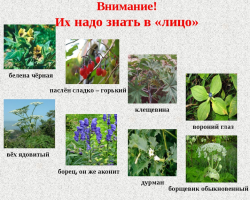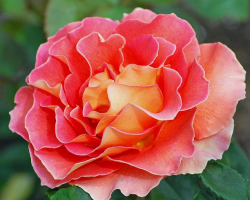Strawberries are one of the most popular berries in Russia. Firstly, the berry is very tasty and its sweetness with sourness to the taste of many, and secondly, the berry loved by everyone, relative to blueberries, gooseberries, etc. - It grows easily, is considered the simplest plant in the garden. In this article we will tell you what is common, and how the repair strawberries differ from ordinary garden strawberries, what varieties to pay attention to, whether it is worth planting innovative varieties of berries, or to adhere to the classics, and to plant what is already on the beds of neighbors.
Content
- Do the repair and ordinary strawberries differ and what?
- What to focus on when choosing varieties of garden strawberries and repair?
- What are the popular varieties of repair strawberries?
- How to plant a mustache repair strawberries?
- How to plant a repair strawberries with division of the bush?
- How to plant repair strawberries with seeds?
- Differences of repair and ordinary garden strawberries: tips and recommendations
- Video: The difference in strawberries is a repair and ordinary
Do the repair and ordinary strawberries differ and what?
Large strawberries are a favorite on Russian tables, and what fragrant jams and jam are obtained from it!
In this section, we indicate the differences in the repair and ordinary garden strawberries so that you, as a gardener, be able to decide which one is better to plant:
- So, the first and main difference between repairing strawberries - it bears fruit at least once, but several times a year, at least 2 times, and the usual one - one;
- Some of the varieties of repair strawberries bloom in May, and by the beginning of June they bear fruit, and after collecting the berries, the flowering process continues, and a continuous crop is given up to frosts;
- Repair strawberries are often kept in greenhouses, thereby increasing productivity, increasing the number of yields per year. But for this it is necessary to choose self -pollinating varieties;
- Garden strawberries are more aromatic, relatively repairing varieties;
- Repair strawberries are considered more watery, although the latest varieties appear every season, and worthy competitors are found classic garden varieties.
We summarize: if you want to enjoy the taste of the classic berry, plant garden strawberries. For conservation, jams and frosts - repair strawberries are great. And, of course, in the first frosts, fresh strawberries from the garden can only be presented with repairing varieties.

What to focus on when choosing varieties of garden strawberries and repair?
Now we will consider not only how the repair and ordinary strawberries differ among themselves, but also what characteristics to focus on, when choosing planting material:
- Sweetness and sourness of the fetus;
- The color and size of strawberry grains;
- Fetal size;
- Yield from the bush;
- Early, medium, late and repair varieties;
- Resistance to temperature changes, resistance to heat, drought, diseases;
- It is more convenient to purchase varieties that grow in your region for more than 3 years. They will have the best survival. But as experiments, you can purchase exotic varieties and be an innovator in your region.
What are the popular varieties of repair strawberries?
You already know the difference in repair and ordinary strawberries and decided to plant part of the garden area with repairing varieties. There are several varieties to your attention:
- Albion -Large, massive dark red juicy berries, with the same powerful bushes. A high harvest, excellent resistance to frost, heat, does not make long droughts, but in this case it may stop fruiting. Fruit continuously, but in exciting, from a large harvest, to small and vice versa;
- Queen Elizabeth - Very large berries with a weight of up to 100 g one berry, dark, juicy, with a rich taste. Bushes give few mustache, which is good for those who do not plan propagation and strive to maintain the integrity of rows. Taste and juiciness directly depends on the quality of care. During the season, the bush gives up to 2 kg of berries. The bushes are resistant to frost, winds, weather changes, take root in various grounds, and are resistant to diseases;
- Lyubava - One of the most popular strawberries, as strawberries are fruit fruiting both on the fallopian bushes and on young outlets. Medium -sized berry, rhomboat or oval, sweet, not juicy, more dense. The taste is excellent, dessert. High yield with simple care. Frost -resistant and easily tolerates mild diseases;
- Selva - Round, bright, juicy and aromatic berries, which are abundantly fruit on the bushes. It grows rapidly and requires regular cleaning from the mustache. With good top dressing and leaving, gives larger berries and abundant crops. Ground - smaller. Requires strong, regular watering;
- Vim Rina -created for lovers of sweet and sour taste and is considered the queen of desserts. Strawberries of this variety resistant to droughts, rainfall, easily withstands pests and is treated;
- Machern -a variety created for shadow areas, which gives a sour-sweet of the medium size of the berry. The first yield of the year gives larger berries, and after that with each crop are smaller and so on until the end of the season. It requires regular watering, you should not plant in sunny areas where there is no natural shadow. Or it is recommended to be covered in the heat by agriculture from the sun (white).

How to plant a mustache repair strawberries?
On the question of how the repair strawberries differs from ordinary garden strawberries, there are some of the reproduction features. The repair strawberry is seated with a mustache, but not all varieties. Some hybrid varieties give “empty” outlets with a mustache, and part of the varieties during the propagation of a mustache - the berry is smaller, the quality of the fetus worsens.
Before propagating the repair strawberries with the help, get acquainted with the variety and its features.
The process of propagation with a mustache is very simple:
- The bush throws out a mustache that are rooted themselves, or they can be immediately rooted in transportation glasses with the soil;
- When the mustache takes on the roots, and also releases 3-5 sheets-to break the mustache with a fallopian bush;
- In prepared soil, plant bushes at a distance of 30-35 cm on a row, and 40 cm between rows;
- The bushes should not be planted thicker so that the leaves of grown bushes do not overlap each other, and there was an opportunity to grow up to the bushes. Otherwise, there is a risk of berry flickering.

How to plant a repair strawberries with division of the bush?
Another difference between repairing strawberries and ordinary garden strawberries. This is that garden strawberries are best propagated by a mustache, and the repairman - by dividing the bush. The process is quite simple:
- After the end of fruiting, 50% of the bushes, if desired, can be rejuvenated and propagated;
- We dig a bush of repair strawberries, divide it into 2-3 parts so that each of the parts has a socket;
- Cut the roots more than 10 cm long, as well as old, dry, etc.;
- Put in a solution of the rhizome, or any substance helping plants for an hour (unless otherwise specified in the instructions);
- We prepare the holes, adding superphosphate, potassium salt, humus and peat;
- Mix with the soil, pour 5-7 cm of soil on top without fertilizers;
- Water the hole, sit strawberries, water the hole again;
- On sunny days, you can cover white agriculture, in the cold - cover the type of greenhouse;
- Watering every day, if sandy soil, in a day or two on black-eyed for at least a month.

How to plant repair strawberries with seeds?
And in conclusion, in the matter of differences between the repair and ordinary garden variety of strawberries, we will consider the question of how to plant a repair strawberries with seeds. Note that this is the most difficult way that is not given to everyone and not immediately. Depends on the quality of the seeds, as well as on the skills of the gardener.
- Put the seeds in the package for a week in the refrigerator so that they go through the cold and are more frost -resistant;
- Take a paper white cloth and stretch it to a container with a soil filled with a height of 10 cm, while with a lid or the ability to cover this container in height by 6-7 cm (most often use plastic food containers from under the cakes and biscuit rolls);
- Pour the soil, stretch the napkin and sprinkle it from the sprayer with a cornevin solution or any other means for better root formation;
- Put the seeds at a distance of 2 cm in a checkerboard pattern, sprinkle again with water and cover with a transparent lid or cling film by creating a greenhouse;
- Open the greenhouse for 15 minutes a day, spraying with moisture so that the seeds do not have a charm, and do not dry out;
- When the seeds will turn off, open for 15 minutes a day 2-3 times, as well as put on a sunny windowsill or on a veranda;
- When the sprouts will be 1-2 cm-open completely and monitor the watering;
- Seal along the beds when plants will be released 3-5 sheets.

Differences of repair and ordinary garden strawberries: tips and recommendations
Marina: There are as many secrets of repair strawberries as usual. Read about each variety, and create the best conditions - then the crop will please. But all of them are united by a love of watering and good fertilizer. But with the latter, you need to strictly observe the norm so that everything does not go into greenery, then the season will be without a crop.
Anna: I have been fruitful of repair strawberries for 5 years. Caring for it is no more complicated than for garden, but I recommend planting varieties at different ends of the areas. At the beginning of gardening, she planted nearby - the varieties were mixed, and they became smaller and not so well fruit.
Want to know more about the garden? You may like our articles:
- Kochiya landing and care in open ground. Kochia in landscape design;
- Mushroom mosquitoes: how to protect indoor plants and seedlings? What are the methods of struggle and prevention?
- Nitroammofoska Fertilizer: Application in the garden for cucumbers, tomatoes, peppers, strawberries, grapes, seedlings, indoor flowers, trees, instructions for use, reviews.







